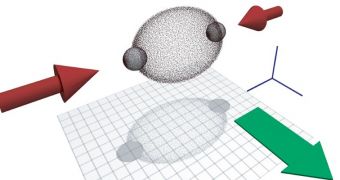The internal states of atoms can apparently be manipulated using special types of laser light, experts at the US National Institute of Standards and Technology (NIST) announce in a new study. This ability has never been demonstrated before.
The most interesting aspect of this study is that atomic interactions can be influenced in very specific manners. The particles, which researchers refer to as light-tweaked atoms, can be used as proxies for a variety of other studies.
Investigators hope to be able to use these atoms to study phenomena and processes at very small scales, which are not visible in other contexts and settings. Details of the study appear in the December 8 issue of the esteemed journal Science Express.
The research also revealed a new class of atomic interactions that may be used to better understand and tweak the basic physics involved in materials called superconductors. The latter are of extreme importance to the development of quantum computers.
Studying particle interactions is not an easy task. There are countless ways in which electrons on each atom in a material can interact with other electrons, and keeping track of this interplay quickly becomes an insolvable problem for even the most advanced supercomputer.
This is why NIST experts are using physical models of various materials, made up of supercooled atoms. Researches such as this one can help them develop new interactions for the materials they are most interested in – such as magnets and superconductors.
“Basically, we’re able to simulate these complicated systems and observe how they work in slow motion,” says NIST physicist Ian Spielman. He is also a fellow of the Joint Quantum Institute (JQI), which is a collaborative enterprise of NIST and the University of Maryland.
The study procedure is not simple, says NIST postdoctoral researcher Ross Williams. “First, we trap rubidium-87 atoms using magnetic fields and cool them down to 100 nanokelvins. At these temperatures, they become what’s known as a Bose-Einstein condensate,” he says.
“Cooling the atoms this much makes them really sluggish, and once we see that they are moving slowly enough, we use lasers to ‘dress’ the atoms, or mix together different energy states within them. Once we have dressed the atoms, we split the condensate, collide the two parts, and then see how they interact,” Williams concludes.

 14 DAY TRIAL //
14 DAY TRIAL //